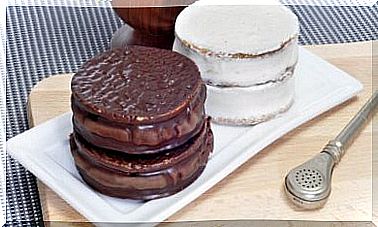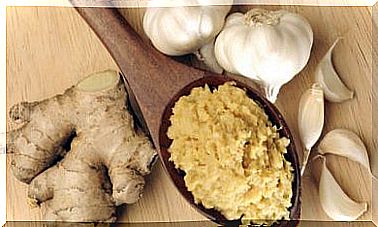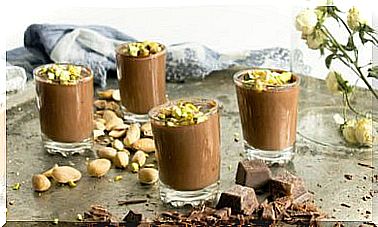Home Baths For Dermatitis: Are They Effective?
A bath can help you relax and cope with some skin problems. In any case, if symptoms persist, consult your dermatologist.

Dermatitis encompasses all types of skin inflammations. It includes pathologies such as atopic dermatitis, seborrheic dermatitis, eczema, psoriasis, etc. These are difficult diseases to cure that tend to disappear naturally many times, despite the fact that there are many conventional treatments, eating tips and natural remedies.
In this article we propose another alternative: take home baths with different natural ingredients that will help you relieve associated symptoms.
Sea water bath
This bathroom, which we can compare with the bathroom on the beach, is an alternative to do at home. However, for this we will obviously have to get sea water. We can collect it at sea or buy it in herbalists or some supermarkets where it is sold.
Ultimately, we can make the bath by adding pure sea salt to the water.
Sea water is a great remedy for skin problems. Many people find that their dermatitis improves just by going to the beach in the summer. The large amount of minerals it provides, its alkalizing and disinfecting power and its beneficial pH for our skin make seawater the most natural and effective treatment.
We will add 2 to 5 liters of sea water to the bath water.
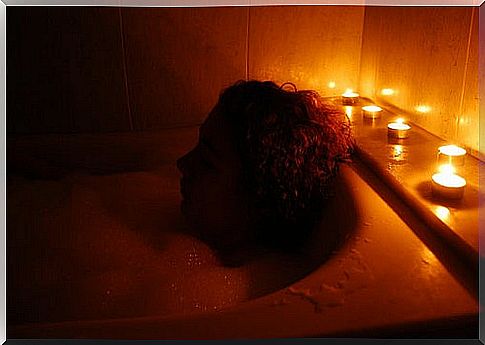
Plantain and mallow bath
Plantain helps regenerate skin cells, promote healing, and prevent infection. Therefore, it is excellent to help relieve dermatitis.
On the other hand, mallow helps us fight and prevent all kinds of pimples, sores, wounds, etc.
- First, we will prepare an infusion with 50 grams of plantain and 50 of mallow in a liter of water.
- Then, we will add this infusion to the bath.
Tea tree bath
Some dermatitis can be related to fungus on the skin. In these cases, tea tree essential oil, with its antifungal and antibacterial properties, can be a great ally.
- Simply, we will add a few drops of this oil to the bath water and also to the sponge that we are going to use for the body.
- This oil is very concentrated, so we will avoid contact with the face and we will start by putting only 10 drops in the bathtub.
Oatmeal bath
Oatmeal is a very nutritious cereal, rich in vitamins and minerals, which also contains mucilages, which help us to soften the skin. It is especially beneficial when we suffer from itching.
- First, to prepare the bath, we will boil half a kilo of flaked oats for 3 minutes.
- Later, we will beat the mixture well.
- The result will be a thick oat milk that we will add to the bath water.
We can complete this bath using an ” oatmeal sponge “:
- First, we will put three handfuls of oatmeal flakes inside a porous cloth, like gauze, and we will tie it with a bow.
- Then, that bag will be used as a sponge.
- With it, we will massage gently, since in contact with the hot water it will release its nutrients.
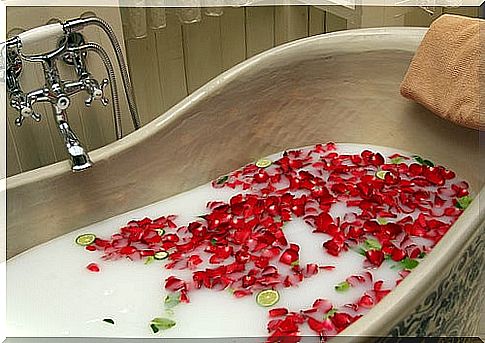
Liquorice bath
Licorice (glycyrrhiza glabra) is a shrub widely used in Traditional Chinese Medicine and in other cultures for its anti-inflammatory and antiviral properties. It is very effective as an ally in the treatment of diseases such as eczema, dermatitis, psoriasis, herpes, fungi, sensitive skin, acne, burns, redness, spots …
In addition, some natural creams include it among their components, thanks to its soothing and relaxing properties.
To prepare this bath:
- First, we will cook 100 grams of licorice root for ten minutes in a liter of water.
- Next, we will let it rest for 5 minutes and we will add it to the bath water.
Final advice
To perform the baths correctly and in the most effective and healthy way:
- The ideal temperature for the bath should be around 30 or 35 degrees Celsius
- In addition, the bath should last approximately 20-30 minutes.
- On the other hand, if we use a sponge, we will try to make it natural
- We will finish the bathroom with a cold shower, avoiding the head area
- Finally, after bathing, we recommend applying natural or gel aloe vera over the entire area with dermatitis.
- You should always remember that if the symptoms persist or are accentuated, it will be your dermatologist who will indicate the best treatment.
Images courtesy of surfzone, Dennis Wong and assimulator



